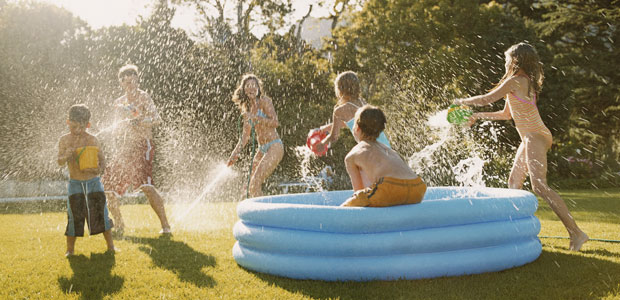Time to prepare for more droughts
With drought leading to hosepipe bans in parts of southern and eastern England, there are warnings that there is worse to come.

We are using 50 per cent more water today than 25 years ago, partly because of power showers and household appliances – and the Environment Agency says climate change and a rising population will put pressure on resources in the future.
While leaks are being plugged by the companies, the average Briton uses more water every day than in Germany and Holland. But water consumption per head is higher in America and Japan.
In a report published in 2011, the Environment Agency said: “Short duration droughts (12-18 months) are likely to become more frequent, so that droughts like 1976 could be more common despite the increased resilience of public water supply and more winter storage.”
The population of England and Wales is forecast to increase by 9.6 million people by the 2030s, with London and the south east under particular pressure. This will put added stress on water resources in the region.
Europe
It is not just an issue for England and Wales. The European Environment Agency (EEA) is warning that water must be used more efficiently to avoid undermining the economy.
In a report published on Tuesday, EEA executive director Jacqueline McGlade said: “Water resources are under pressure in many parts of Europe, and it is getting worse. With climate change making water supply less predictable, it is extremely important that Europe uses water more efficiently for the benefit of all its users. Water resources should be managed as effectively as any other natural asset owned by countries.”
The report said water shortages had reached a “critical” level in some European countries. “While most Europeans have historically been insulated from the social, economic and environmental impacts of severe water shortages, the balance between water demand and availability is reaching critical levels in parts of Europe. Such water stress typically arises from over-abstraction, together with periods of low rainfall or drought. “
Leaks
In England and Wales, the water companies have had some success in fixing leaks. Total daily leakage in England and Wales has fallen by a third since its mid-1990s peak (by more than 1.8 billion litres), according to the regulator Ofwat.
The water saved is enough to serve the needs of 11 million customers – or the combined populations of London, Birmingham and Wales.
By 2014-15, water companies will have saved 270 million litres a day by promoting water efficiency, reducing leakage and installing meters – equivalent to more than 2 per cent of all the water they deliver to customers.
But of 21 water companies, six failed their leakage targets in 2010-11. They included Southern and Anglian, which have just introduced hosepipe bans.
Fixing leaks is expensive. To replace all the pipes in England and Wales would cost £100bn, but customers do not want to pay more for their water.
The good news, in Ofwat’s words, is that “drinking water quality remains up there with the best in Europe”.
The drought will not affect racing at the Cheltenham Gold Cup. Four million gallons of water have been added to the ground in recent weeks to ensure it is not too hard, but Cheltenham's gain will not be at the expense of the public - because the race uses its own water which it collects in a reservoir.

The average person in England and Wales uses 146 litres of water a day (the government is hoping to reduce this by 20 litres), while the average household uses more than 100,000 litres a year.
This compares unfavourably with Germany and Holland, where 125 litres of water per person are used every day, according to the water efficiency organisation Waterwise.
It is line with most Indian cities, where water use per head is 140-150 litres of day. But it is lower than in America and Japan, where water use is 260 and 245 lites per day respectively.
There has been a very slow but steady decline in household water usage in England and Wales, largely due to more efficient toilets, and most water companies are expecting this decline to continue. But with the population rising, there is likely to be a rise in overall demand.
Conserving water
Most of the water we use is for washing and toilet flushing, and the Environment Agency suggests that people reduce their consumption by the following methods:
– Have a bath rather than a shower
– Wait until you have a full load before switching on the dishwasher or washing machine
– Wash your car with a bucket
– Let your grass grow
– Reuse bath water in the garden or on house plants
– Put a “save-a-flush” in your toilet cistern
– Collect rainwater in water-butts and use a watering can instead of a hose
– Replace worn washers on dripping taps